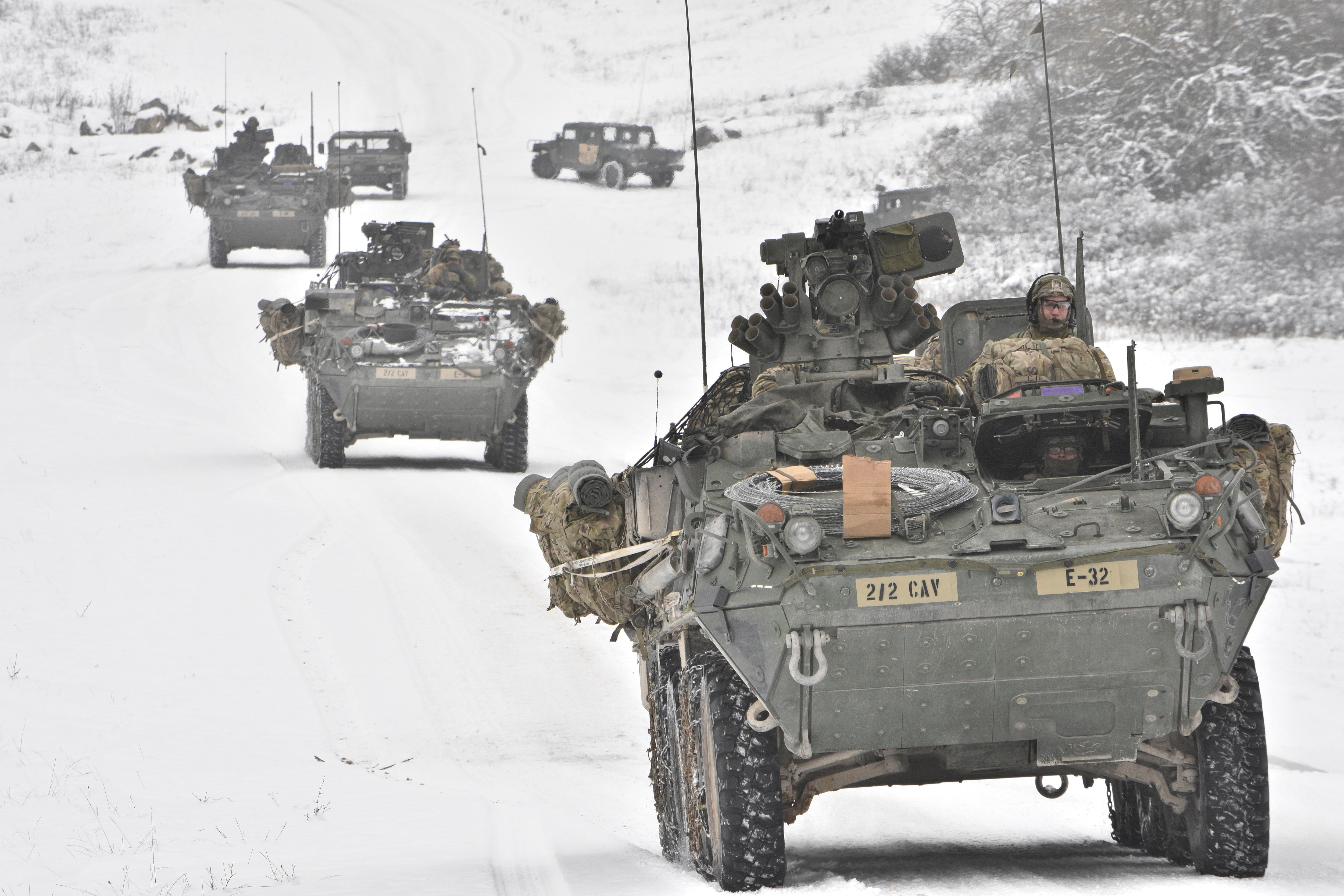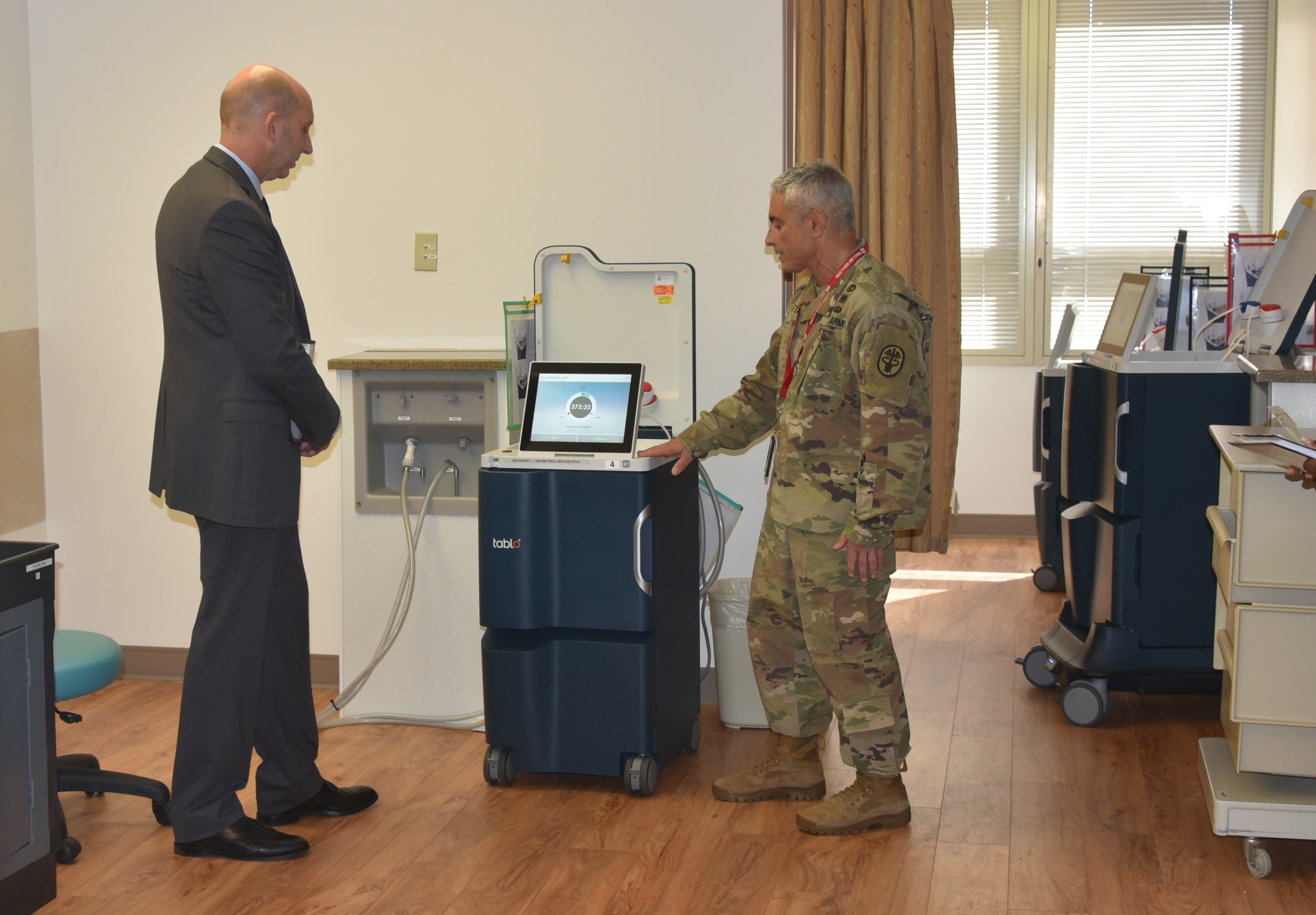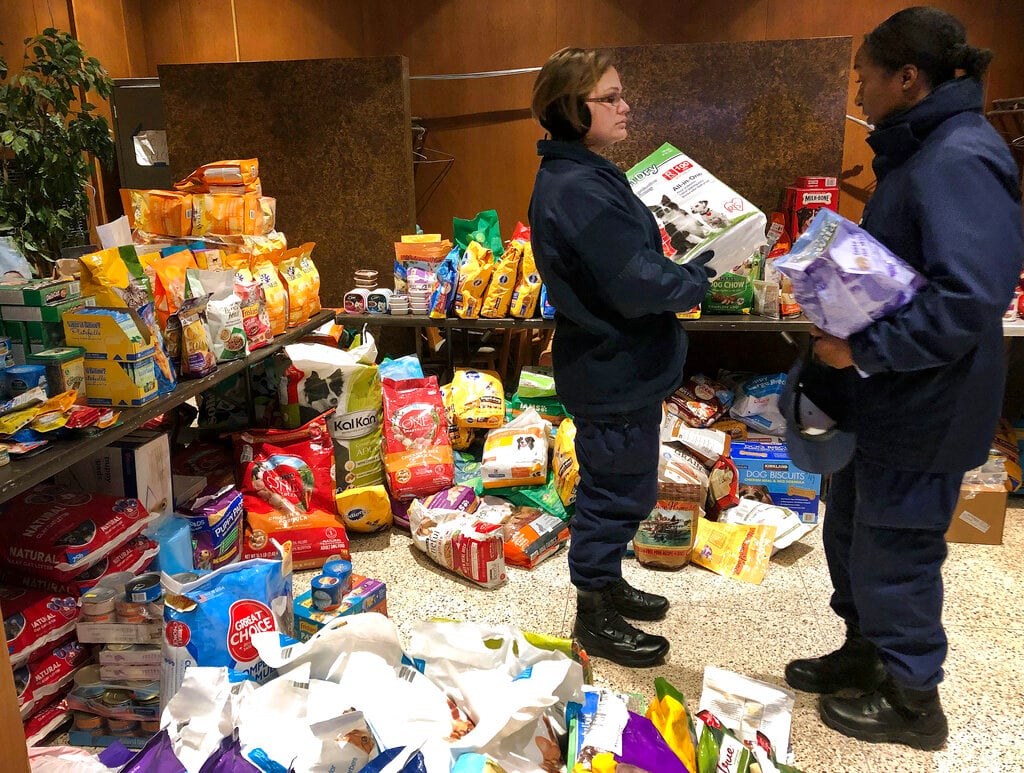On-duty soldier fatalities fell 25 percent in fiscal 2020, but the number of deaths involving Army combat vehicles continued an upward trend that’s been underway for about four years, data provided to Army Times shows.
When strictly the number of vehicle accidents are counted, regardless of whether there were multiple deaths or none at all, an annual assessment shared by the Army Combat Readiness Center shows that collisions and rollovers reached a five-year low in 2020.
Looking specifically at the incidents that took soldiers’ lives, however, can help prevent those losses in the future.
At least five of the 11 on-duty vehicle deaths in 2020 could have been prevented by properly wearing restraint devices, according to the annual assessment. Last year, none of the soldiers killed in tactical vehicles were wearing serviceable restraints.
Leaders or supervisors have also failed to correct a deficiency or standards violation in more than 70 percent of Class A mishaps — the most catastrophic category — over the past five years. Those violations include allowing excessive speed while driving, troops resting or sleeping in unauthorized areas and improper ground guiding, parking or maintenance checks.
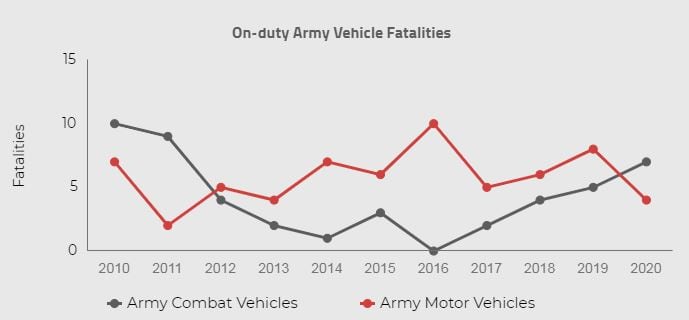
Driver training is cited as an issue in more than 60 percent of tactical vehicle mishaps, and is an area the service still needs to work on, according to Brig. Gen. Andrew Hilmes, the Army’s safety director.
In September 2019, the Army published updated regulations regarding driver selection, training, testing and licensing, but it’s still up to leaders to ensure its followed.
“That has some good material in it on how to develop drivers using a progression model,” Hilmes said during a Dec. 15 interview. “We don’t just license and operate the vehicle, we progressively certify them to operate it in progressively more challenging terrain under different conditions.”
Those training guidelines can curb mishaps if they’re followed.
After an M2A3 Bradley fighting vehicle rolled over Nov. 6, 2019, at Camp Humphreys, South Korea, it was determined that the driver, who died in the mishap, only had six hours of hands-on training and no classroom instruction before he was ordered to road-test the Bradley, according to the soldier’s congressman.
RELATED

Regulations required three days of classroom instruction and two days of hands-on driving experience with an instructor before troops were licensed to drive the Bradley, the congressman’s office has said.
In terms of pure numbers, fiscal 2020 has still been the safest year since the service started tracking a range of on- and off-duty accidents in the 1980s, according to the annual assessment. But even one death is too many, Hilmes added.
Eleven soldiers were killed in government vehicles in fiscal 2020, all but two of which involved tactical vehicles. Eight soldiers were killed in six rollover incidents and six collisions resulted in three other soldier deaths.
Lawmakers, senior military officials and the media have been particularly focused on rollover fatalities. Although 2020 saw fewer of those than 2019, the eight soldiers killed in rollovers this year shows “this issue still requires command emphasis,” the assessment reads.
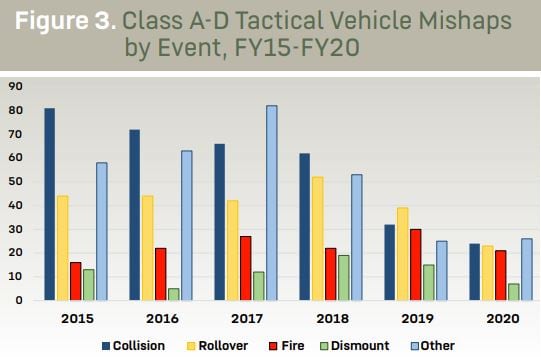
Practicing rollover drills, wearing restraints if they’re available and securing loose items that could strike passengers during a crash can curb those numbers.
“We actually have not lost a soldier in a rollover accident since March 2018 who had a serviceable restraint available to them,” Hilmes said. “If you’re in the turret of an Abrams tank, you may not have a restraint available to you, but where a restraint was available, and if you’re wearing it, your chances of surviving that rollover mishap were pretty darn good.”
Over the past few years, an average of 70 percent of soldiers killed in vehicle accidents were not wearing seat belts or restraints. That dials into another problem with vehicle mishaps: They’re often not caused by unseen issues during major training events.
“What’s tripping us up is the routine stuff,” Hilmes added. “The majority of our accidents are administrative in nature … these are uncontested missions. They’re not cross-country. These are simple movements of one to four vehicles that are just trying to navigate from point A to point B.”
One such case occurred Oct. 20, 2019, when an M2A3 Bradley crew flipped off a bridge at a training area on Fort Stewart, Georgia. There were navigating under blackout conditions on an administrative road intended to be driven with white lights.
The road was wide and often traveled, but leaders contributed to the mishap by deciding to drive blackout even though the weather was poor and soldiers’ forward-looking infrared devices were flaring out. Three soldiers drowned inside their Bradley after they drove onto the bridge’s guardrail and rolled into a creek below.
“In the majority of the fatal accidents, we see a first line supervisor’s failure to implement and enforce standards,” Hilmes said. “Emphasizing dynamic, continuous risk management has a high payoff for us.”
Kyle Rempfer was an editor and reporter who has covered combat operations, criminal cases, foreign military assistance and training accidents. Before entering journalism, Kyle served in U.S. Air Force Special Tactics and deployed in 2014 to Paktika Province, Afghanistan, and Baghdad, Iraq.
